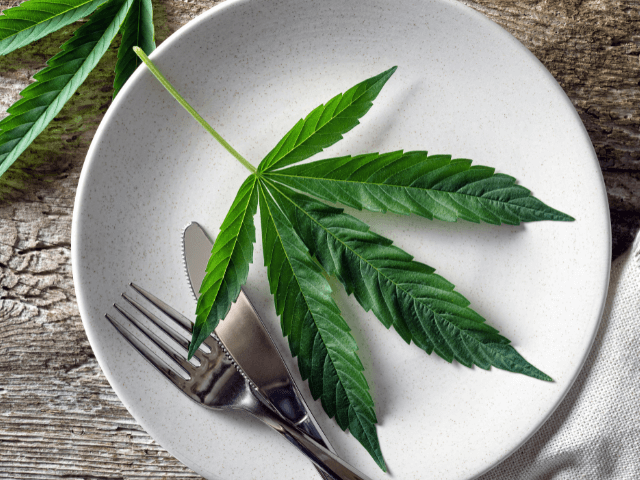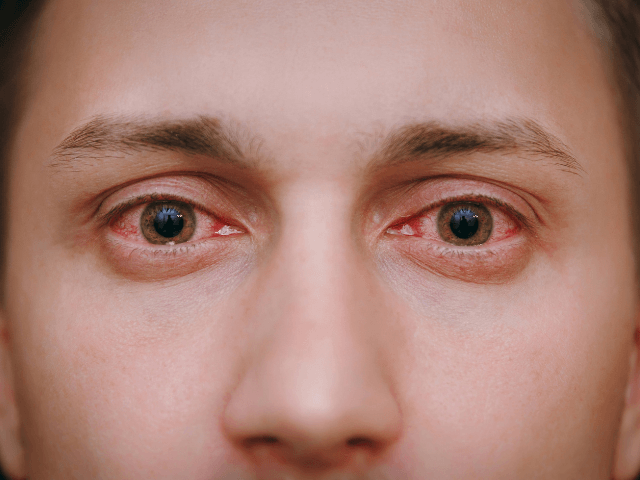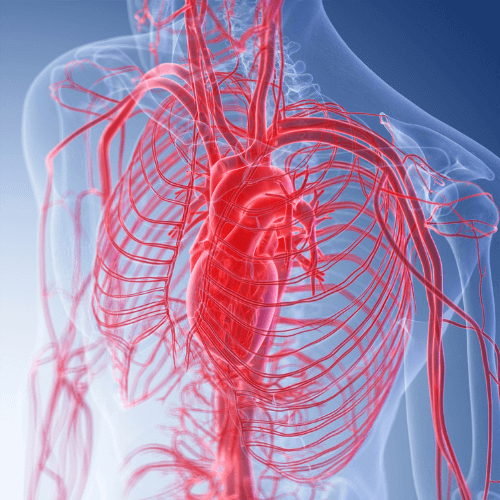Without getting into detail, yes, food infused with THC will still trigger the tell-tale sign that you are high out of your mind, bloodshot eyes.
While it is natural to think that inhaling the hot smoke from a burned cannabis flowers is what makes our eyes red, the real culprit is THC. Regardless of the delivery method, the compound dilates our capillaries increasing blood flow to the eyes. The interaction between cannabis and our bodies is complex but understanding the relationship has led to life-changing treatments. As we learn more about the unique properties of THC and other cannabinoids, we are confident that more uses for medical marijuana will be discovered.

In fact, edible THC leads to bloodshot eyes, but there’s a deeper mechanism that most cannabis users don’t understand. We will discuss the distinctive properties that eating THC has on the body, why it turns our eyes red, and how this phenomenon actually helps patients suffering from severe medical conditions.
What are Edibles?
Edibles are the broad term for all cannabis-infused foods. When we separate or extract cannabinoids like THC and CBD from the original plant, they have to be delivered to the body in an appealing manner. So far, combining weed compounds with delicious foods is the most appetizing way we’ve come up with to administer cannabinoids.

Not all edibles contain THC. In recent years, as hemp-derived products have been legalized in much of the world, edible CBD is on the rise. Gummies packed with CBD and other non-intoxicating cannabinoids are now found in grocery stores. While these products have the potential to deliver incredible benefits, they won’t get you high. THC is the reason why we become stoned after consuming marijuana and why our eyes become bloodshot.
How Are Edibles different than smoking?
Edibles are the easiest way to consume THC. Making the process accessible to anyone but also raises concern for inexperienced users taking too much.
Smoking differs from edibles ineffectiveness. The amount of THC you consume is dependent on how your smoking efficiencies. Smoke containing THC molecules has to be inhaled and absorbed by the blood in the lungs to affect the user. This is why many first-time weed smokers don’t feel the effects; they haven’t learned how to inhale. THC smoke in the lungs is highly effective; most of the particles are absorbed, but getting the THC to the lungs is the challenging part.
On the other hand, edible THC is consumed more efficiently but processed less effectively in the digestive tract. As a result, much of the THC and other cannabis compounds are wasted in the process. However, the THC that does make it to the liver and is properly metabolized is much more potent than the THC we inhale.
How do Edibles Work?
Every cannabis user has a crazy edible story. They take their dose, don’t feel anything for an hour, take more, and spend the next 5 hours wrestling with their own existence. These stories are common because edible THC takes longer to hit and is much more potent.
11-Hydroxy-THC
When THC is sent to the digestive system, it is broken down by the liver. Here’s where edibles differ from smoking cannabis, the liver converts the THC into a metabolite 11-hydroxy-THC. The THC metabolite is 2-3 times more potent and has been known to produce hologenetic effects. Many people who have taken incredibly large doses of edible THC will compare their experience to psychedelic mushrooms or LSD.
Delayed but More Potent Effects
Hydroxy-THC is much more potent, but it takes some time before the body produces the metabolite. Everyone is different, but you can usually count on the process to take at least 20 minutes.
An interesting fact about edible marijuana is that some people don’t feel the effects. Their body doesn’t convert THC to hydroxy-THC, and they aren’t taken on the spiritual journey even after taking hundreds of milligrams. In this rare case, edible cannabis won’t turn the eyes red of the consumer, but the percentage of people who don’t get lit off edibles is small.
Consuming Cannabis – Edibles VS. Smoking
Whether you eat or smoke THC, your eyes will experience red eyes.
Smoking marijuana delivers THC to the blood, where it can be distributed throughout the body. When the compound comes in contact with the cannabinoid (CB) receptors, the THC binds and causes the receptor to flood the brain with serotonin.
THC’s ability to bind with CB1 and CB2 (the types of CB receptors we are currently aware of) because of its structure. Because 11-hydroxy-THC is structured slightly more favorable to CB1, it binds more efficiently and delivers a more potent high.
When our blood pressure drops, our ocular capillaries dilate and, in turn, increases blood flow to the eyes.
THC Reduces Intraocular Pressure
We’ve answered the question ‘do edibles make your eyes red’ but here’s exactly how it works.
THC doesn’t instantly turn our eyes bloodshot; it takes about 10 minutes to occur. Consuming cannabis initially increases our blood pleasure and heart rate, but in about 5 minutes, your heart rate will slow down, and your blood pressure will drop.
THC creates dilated ocular capillaries and reduces Intraocular pressure is the reason why THC leaves users with red eyes.
How to Avoid Red Eyes After Consuming Cannabis
Avoiding increased blood flow to the ocular capillaries after consuming THC is impossible to do naturally. However, with the help of eye drops, you can prevent bloodshot eyes and look much more presentable out in public.
Eye drops work by narrowing the blood vessels in the eyes, making them less apparent. Every seasoned veteran has their choice of eye drops if they don’t want to look completely stoned.

How Blood Vessels and Capillaries Are Affected by Cannabis
THC affects our blood, similar to the endocannabinoid anandamide. When THC or anandamide enters the bloodstream, the blood pressure is reduced, and the user experiences a lovely serotonin high. The phenomenon can be naturally produced by running an extended period, known as the runner’s high.

Why Cannabis Helps Glaucoma Patients
THC’s ability to lower blood pressure and reduce intraocular pressure is taken advantage of by glaucoma patients. The condition is caused by high eye pressure. Consuming cannabis can lower intraocular pressure as effectively as other more conventional treatments.
Lowering blood pressure, which reduces intraocular pressure, is why medical marijuana is effective at treating glaucoma. Most glaucoma patients, however, prefer other treatment options because smoking marijuana all day isn’t feasible. THC works but has to be done 24/7 to lower blood pressure.

Be Cautious When Enjoying Edible THC
Edibles have a unique way of delivering THC to the endocannabinoid system. While the process takes longer and can be much more potent, the effects still include the notorious bloodshot eyes we associate with marijuana use. Do edibles make your eyes red? There’s no escaping increased blood flow to the eyes. Eye drops are currently our only solution.
Red eyes are only one of the concerning effects of edible marijuana. If you are eating weed for the first time, exercise caution. Restrain the desire to eat more even if you don’t feel anything for an hour; no one wants to be a cautionary tale.

